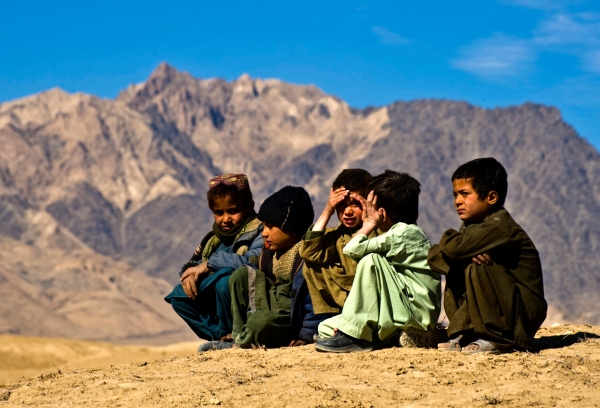Afghanistan is experiencing several problems: on the one hand, the never-ending hostilities amid the ongoing talks between the US and the Taliban; the uncertain and contested results of presidential elections held in December; and on the other hand, a severe, 40 years-long displacement crisis.
Last year alone nearly one million people were on the move, displaced by conflict, and disasters, or pushed home by neighbouring countries, according to new UN figures. This year, the conflict has displaced more than 350,000 people throughout the country since January 1, according to data by the United Nations Office for Coordination of Humanitarian Affairs (OCHA). Overall, 354,664 people were displaced in 31 out of the total of 34 provinces, OCHA reported. By comparison, about 310,000 people were forced from their homes in the same period last year. Most people who fled were in the northeast region with more than 160,000 people displaced, followed by the east with 68,000, the north with 60,000, and the west with 29,900 people displaced.
A situation of 40 years-long instability, where Afghans have continued to flee violence, war, conflict and natural disasters, is at the root of the ongoing displacement trend. What’s more, as noted by The New Humanitarian, migrations and conflict are very closely linked, since many Afghans who return home from neighbouring countries just find their homes behind war lines, and a stumbling economy and job shortages mean people many end up worse off than they did living as refugees in other countries. “The majority of returnees from abroad live a life of internal displacement”, noted the Geneva-based Internal Displacement Monitoring Centre in a January report. “They are either unable to return to their areas of origin or become displaced again once back in Afghanistan. In some parts of the country, returnees and internally displaced people comprise more than one-quarter of the population.
All this led the Government of Pakistan, one of the major host countries for Afghan refugee, alongside Iran, and UNHCR to jointly convene a ministerial meeting in Islamabad next week to send a global reminder about the fate of millions of Afghans living as refugees, many of whom feel the rest of the world may have already abandoned them. Neighbouring countries like Pakistan and Iran, indeed, continue to show remarkable generosity by providing refuge to millions of Afghan women, children and men, all with little recognition and decreasing international support, as noted by UNHCR spokesperson Andrej Mahecic in a press briefing at the Palais des Nations in Geneva. Afghanistan, today, Mahecic said, has a population of 35 million people: nearly 25 percent of them are former refugees who have returned home in the last 18 years, while more than a million people are displaced internally. Some 4.6 million Afghans - including 2.7 million registered refugees still live outside of the country. Around 90 percent of them are being hosted by Pakistan (1.4 million) and Iran (1 million). In an upsetting trend, Afghans are also the largest group of asylum-seekers currently arriving in Europe. But against this backdrop of ongoing need, Mahecic adds, global support for the Afghan refugee situation has been on the decline: UNHCR has seen funding levels drop for its already under-resourced operations in Afghanistan, Pakistan, and Iran over the years, making it hard to invest in Afghan lives and continue support to affected local host communities. According to Mahecic, underfunding severely affects efforts to educate and empower young Afghans in exile, who will play the leading role in rebuilding their communities upon return. Failing to educate them so brings with it immense risks for an uneducated youth in a region prone to radicalization. The international conference, on 17-18 February, will highlight the generosity, hospitality, and compassion of Pakistan, Iran and other countries in hosting one of the world’s largest and longest-standing refugee populations.
Meanwhile, we also need to consider political uncertainty as a key factor in shaping the country’s situation. Preliminary results of last year’s presidential elections, which was announced in December, after weeks of delay, put incumbent president Ashraf Ghani in the lead, but his main challenger disputed the count.
Despite the ongoing US-Taliban peace talks, fighting in the country surged last year during negotiations. According to analysts, both sides tried to gain leverage during negotiations through military gains. The talks were then called off by US President Donald Trump in early September after an American soldier was killed in a Taliban attack. However, the talks have then resumed, when US special envoy Zalmay Khalilzad arrived in the Afghan capital on 26 November and met Afghan officials, including President Ashraf Ghani and Chief Executive Abdullah Abdullah. The visit was Khalilzad’s first to Afghanistan since talks resumed with the Taliban. Nevertheless, it’s still uncertain what role there will be for the Afghan government given the soaring conflict casualties of 2019.
To know more, please read:
https://www.aljazeera.com/news/2019/10/350000-afghans-displaced-2019-report-191028091143806.html
Author: Pasquale Candela; Editor: Shrabya Ghimire







